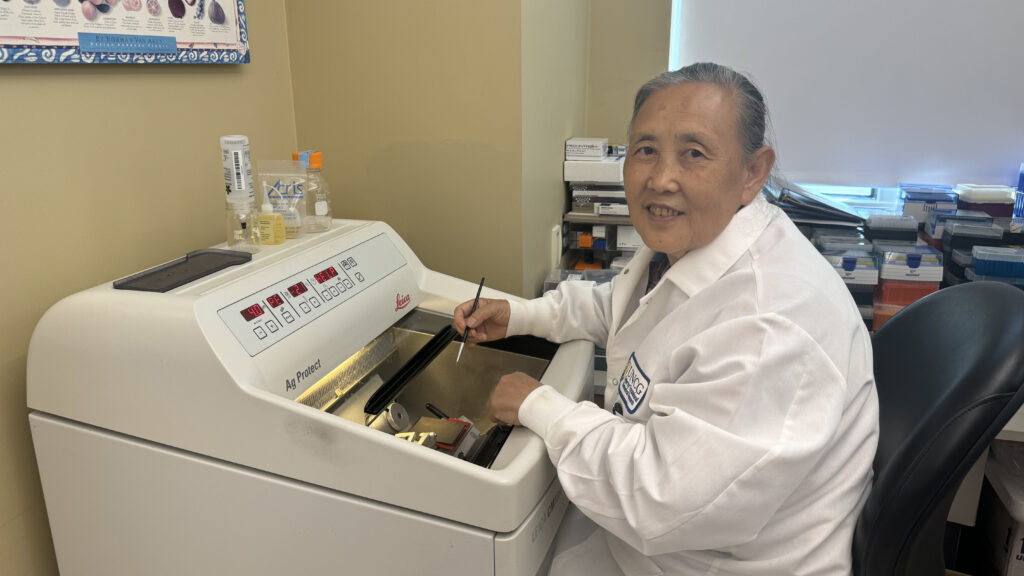Zhou Research Group
Research Focus: Metabolic Liver Diseases
Overview
Dr. Zhangxiang Zhou’s laboratory examines how imbalanced dietary consumption, such as the abuse of alcohol and other hallmarks of contemporary Western life, contributes to the development of liver diseases. 1 in 10 Americans have some form of liver disease, and the number of deaths related to these diseases may be higher than we think. (Mayo Clinic researchers recently challenged CDC statistics and placed liver disease as the 8th leading cause of American deaths). With funding from the National Institutes of Health, the Zhou Research Group currently focuses on combating fatty liver disease, in which excess lipids deposit in the liver due to alcohol abuse or obesity. Unchecked fatty liver disease can progress to hepatitis (inflammation), liver cirrhosis (scarring), and liver failure. CTBR researchers in the Zhou group are exploring the biological causes and progression of fatty liver disease, methods for early diagnosis, and particular dietary and pharmaceutical interventions that could prevent and even reverse damages caused by the disease.

Zhanxiang Zhou, Ph.D.
CTBR Co-Director, Professor, Nutrition
Tel: 704-250-5800
Email: [email protected]
Current Projects
ALDEHYDE TOXICITY
Investigating the mechanisms by which aldehydes impair cell function and induce organ damage, and developing strategies to speed up aldehyde clearance. Alcohol consumption exerts toxic effects on the body with gut, liver and brain as the major target organs. Aldehyde generation is a feature of alcohol intoxication. While alcohol metabolism generates acetaldehyde, lipid peroxidation produces lipid aldehydes such as 4-hydroxynonenal and malondialdehyde. Accumulation of aldehydes has been detected in intestinal contents, liver, blood and brain after alcohol intoxication. This project aims to investigate the molecular mechanisms by which aldehydes mediate alcohol-induced cytotoxicity at the gut-liver-brain axis.
LIPOTOXICITY
Lipid accumulation is one of the most fundamental cellular disorders in the development of alcoholic liver disease. During the past decades, great efforts have been paid to understand the mechanisms by which alcohol abuse induces hepatic accumulation of lipid droplets, particularly triglyceride. However, increasing evidence suggests that free fatty acids are more toxic than triglyceride. Therefore, it is important to understand the mechanism by which alcohol abuse increases the hepatic fatty acid level and by which fatty acids induce cell injury. This project aims to investigate the mechanisms by which alcohol abuse increases the hepatic fatty acid level and by which fatty acids induce cell injury. We are also interested in understanding of how dietary factors may modulate fatty acid homeostasis in the liver.
ORGAN INTERACTIONS
Increasing evidence support a concept that extra-hepatic factors critically involve in the pathogenesis of liver diseases. The most well studied factors include endotoxin penetration from the intestine and excess fatty acid release from the white adipose tissue. Only trace amount of intestinal endotoxin can penetrate to the blood at normal condition. However, blood endotoxin level will be elevated, namely endotoxemia, at disease condition such as alcoholic and nonalcoholic liver disease. Endotoxin plays critical role in development of hepatitis by triggering production of proinflammatory cytokine. On the other hand, lipids stored in the white adipose tissue could be released and deposited in the liver at alcohol abuse or obesity conditions. The objectives of this project are to investigate the mechanisms by which extra-hepatic factor are generated and by which these factors contribute to the pathogenesis of liver damage
DIETARY INTERVENTIONS
Exploring dietary interventions to prevent or treat liver diseases. Liver is the major organ responsible for metabolism in the body. The metabolic function of the liver can be disturbed at disease conditions such as alcohol exposure and toxicant exposure. Functional disorder of the liver may, in turn, affect nutrient absorption and metabolism, leading to nutritional deficiency. Previous reports from our research group have shown that alcohol abuse zinc deficiency and improvement of zinc homeostasis by dietary zinc supplementation ameliorates alcoholic liver disease. Other dietary factors such as niacin and saturated fat also have beneficial effects on alcoholic liver disease. The goal of this project is to screen nutrients and natural products which may protect against liver disease work via intrahepatic or extrahepatic mechanisms.